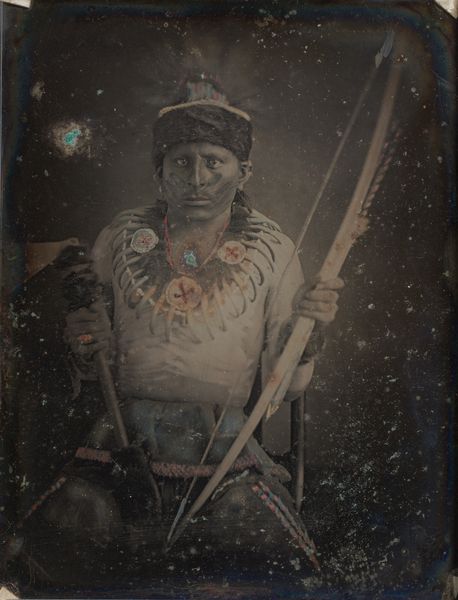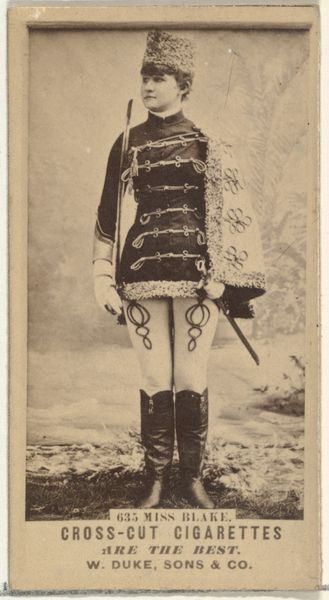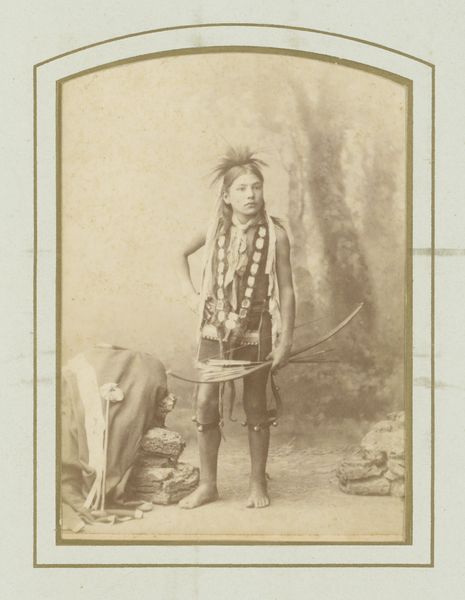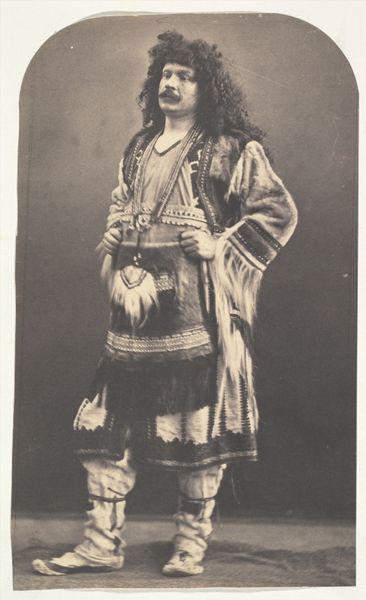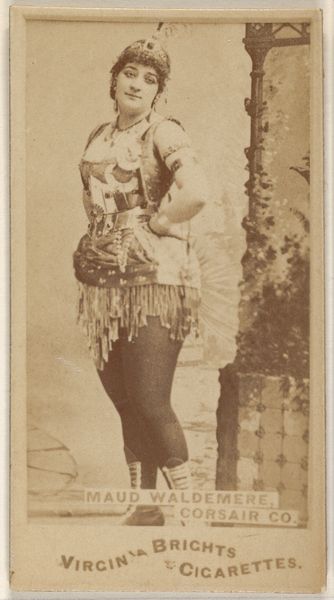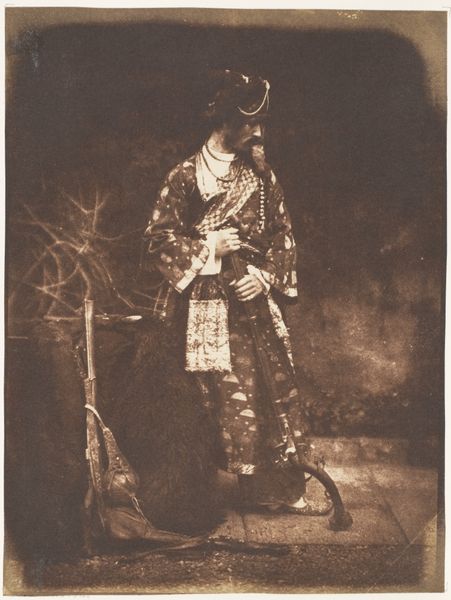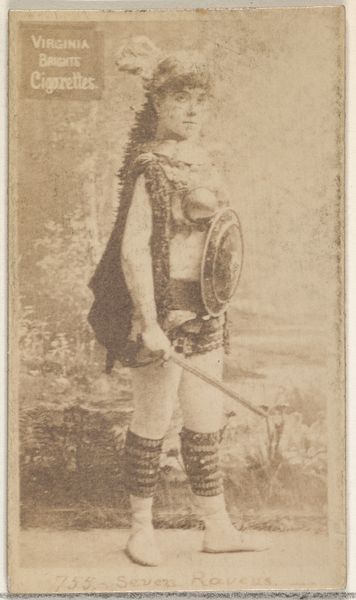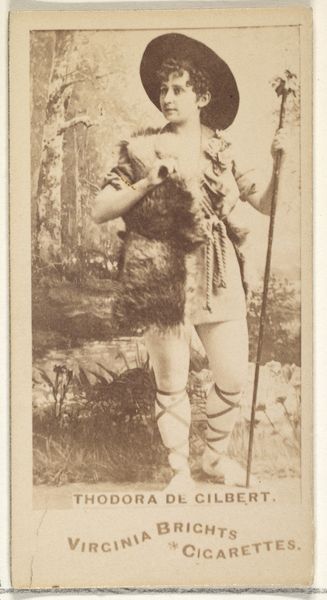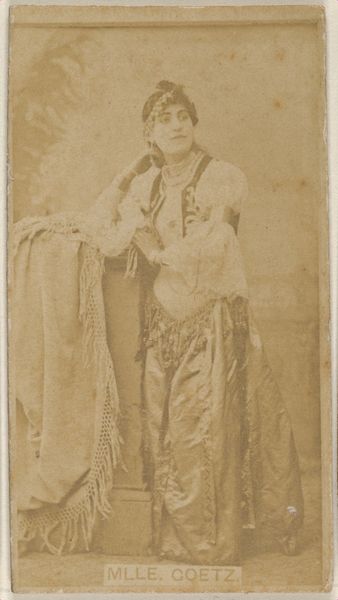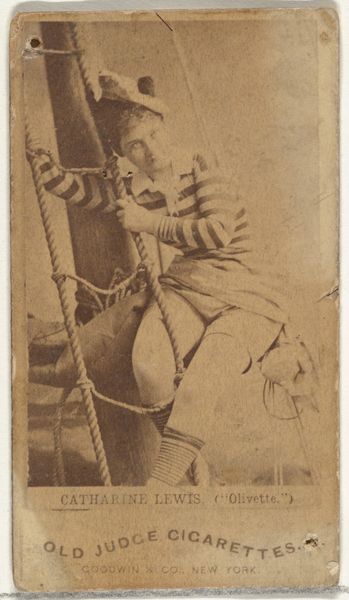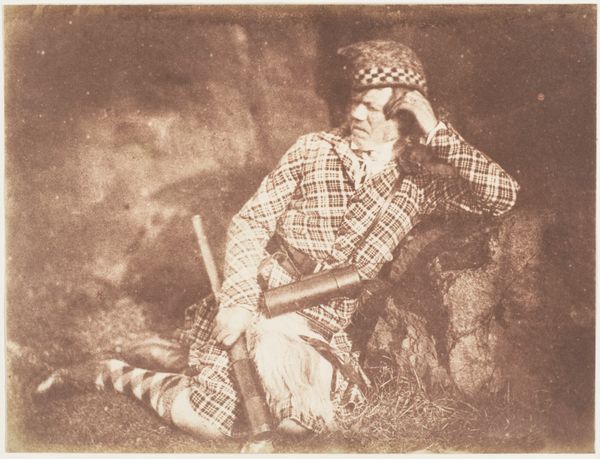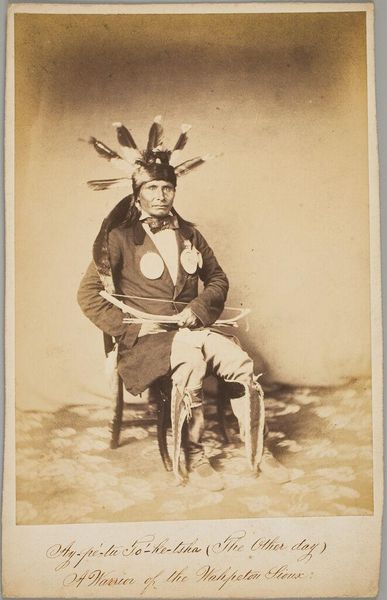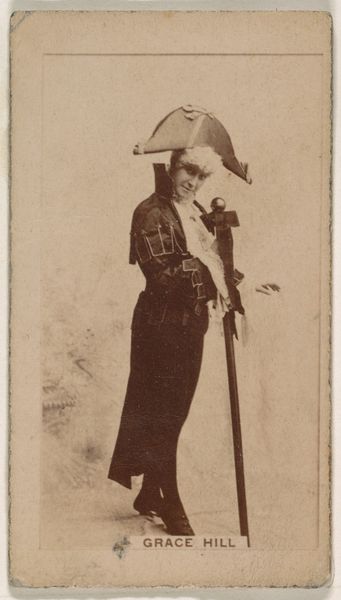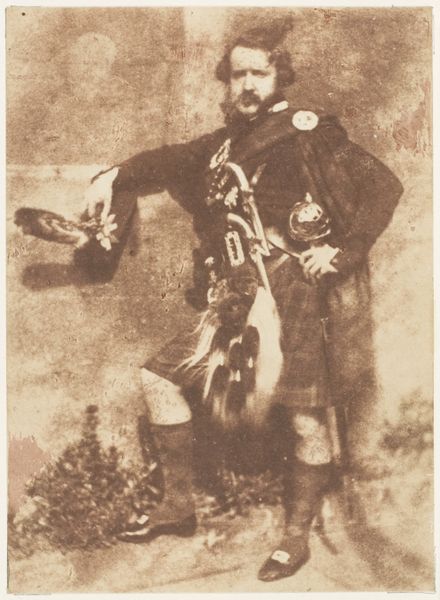
photography
#
portrait
#
asian-art
#
ukiyo-e
#
photography
#
orientalism
Dimensions: height 182 mm, width 140 mm
Copyright: Rijks Museum: Open Domain
This photographic print of a samurai, now at the Rijksmuseum, was created by Felice Beato in the late 19th century. Beato was a pioneer in photography, especially known for his images of the Crimean War and the Far East. The albumen print, made from a glass negative, was a popular photographic process at the time. It’s a technique that involves coating paper with a layer of egg white and then sensitizing it with silver nitrate. This process gives the photograph its warm, sepia tone and a smooth surface, though it’s prone to fading and damage over time. Beato's choice of medium was not just a technical one; it was a deliberate engagement with the aesthetics of the era, where photography was beginning to be recognized as a powerful means of documentation and artistic expression. The photograph is a cultural artifact, capturing a moment in time and a specific subject, while also reflecting the values and technologies of the 19th century. It reminds us of the labor, skill, and cultural context embedded in every object, challenging the traditional hierarchies between art, craft, and documentation.
Comments
rijksmuseum about 2 years ago
⋮
These partially burned photographs from around 1863 are rare snippets of important patrimony. Bauduin was the first Dutchman to photograph in Japan. He portrayed the Japanese, and photographed their houses, villages, and surrounding landscapes. Antoon Bauduin also recorded his own life, and that of his brother, who was a merchant and consul in Japan. Bauduin’s estate is held in part by the University of Nagasaki and by the Rijksmuseum in Amsterdam.
Join the conversation
Join millions of artists and users on Artera today and experience the ultimate creative platform.
